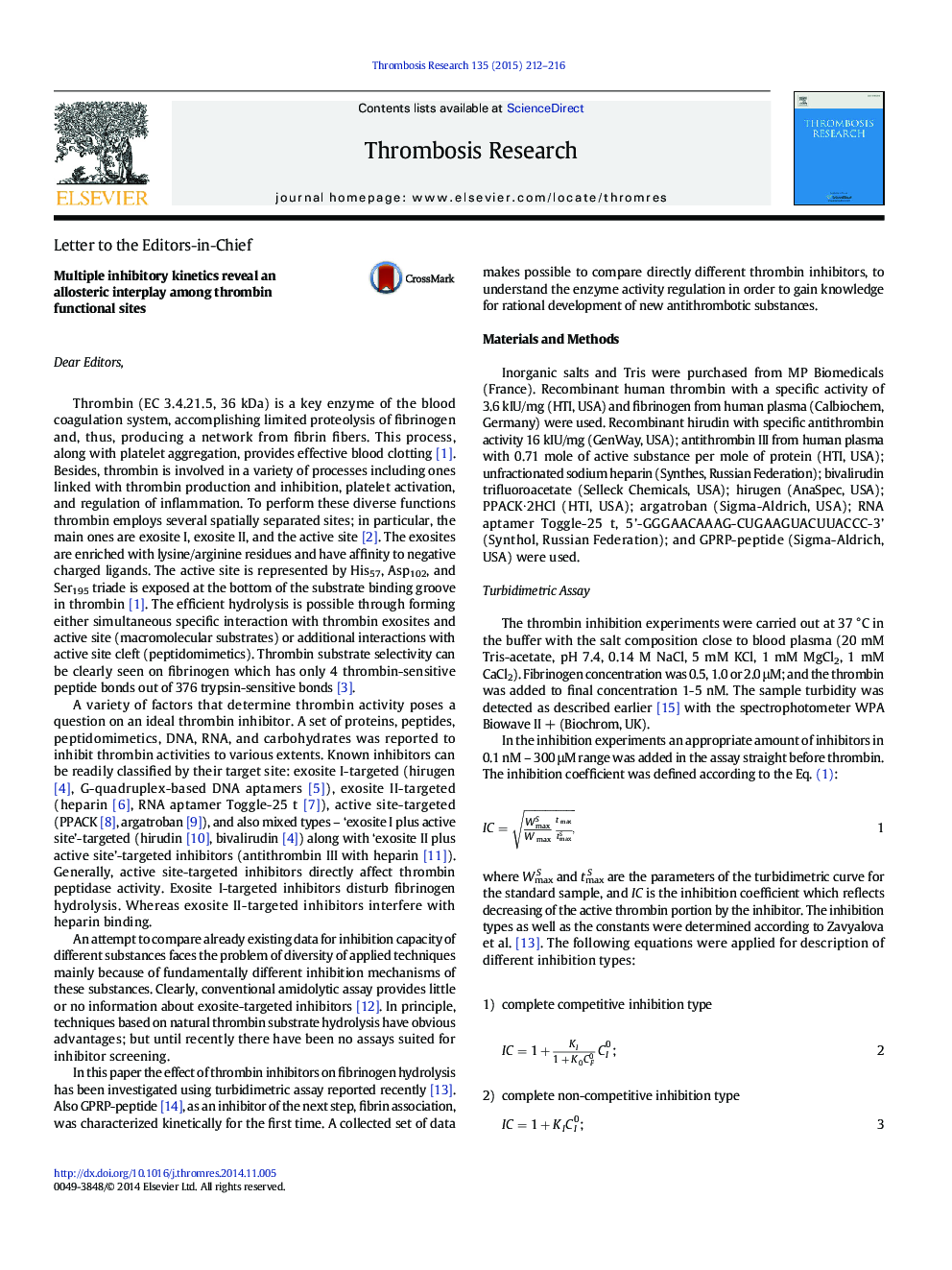| Article ID | Journal | Published Year | Pages | File Type |
|---|---|---|---|---|
| 3027130 | Thrombosis Research | 2015 | 5 Pages |
•A repertoire of inhibition types was explored for thrombin inhibitors with a turbidimetric assay•Active site- and exosite I-targeted ligands are able to inhibit fibrinogen hydrolysis completely•Macromolecular ligands affect fibrinogen hydrolysis in a competitive manner•Low-molecular ligands probably form nonproductive complex•Exosite II-targeted ligands inhibit thrombin only partially through allosteric interplay
Thrombin is a key blood clotting enzyme; therefore, developing of its inhibitors has become a mainstream in antithrombotic pharmacology. As a result, a wide variety of proteins, peptides, peptidomimetics, DNA, RNA, and carbohydrates were reported to be effective inhibitors of thrombin activities. The majority of described inhibitors were characterized kinetically with amidolytic assay only; though some of them inhibit fibrinogen binding rather than amidolytic activity, e.g. hirugen and nucleic acid aptamers. Per contra, studying the inhibition kinetics of fibrinogen hydrolysis might reveal essential peculiarities of mechanism of action of thrombin inhibitors.In this paper the effect of thrombin inhibitors on fibrinogen hydrolysis has been investigated using improved turbidimetric assay. This technique is highly productive versus fibrinopeptide determination allowing elucidation of inhibition type and apparent constant for different types of thrombin inhibitors. The protein (recombinant hirudin, antithrombin III), peptide (bivalirudin, hirugen), and peptidomimetic (argatroban, PPACK) inhibitors were characterized in terms of inhibition types for the first time.Unexpectedly, for others: heparin, RNA aptamer Toggle-25 t, partial inhibition has been shown indicating allosteric interplay between exosites.Improved turbidimetric assay is also applicable for studying the fibrin association inhibitors. Hence, GPRP-peptide was characterized kinetically for the first time.The kinetic study revealed a repertoire of different inhibition types and also close allosteric interplay within the thrombin. The results are undoubtedly important for understanding the enzyme activity regulation, as well as for the rational development of new antithrombotic substances.
